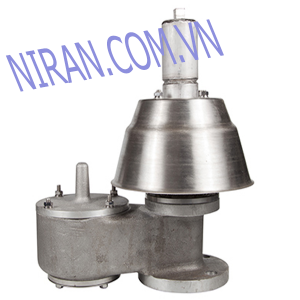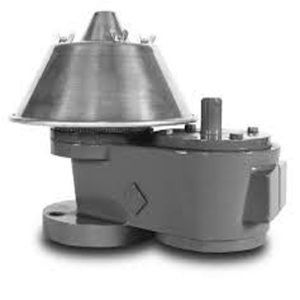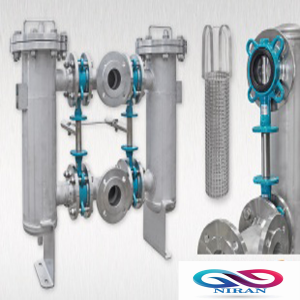Product Description
Breather valve- Pressure / Vacuum relief valve
PRODUCT DESCRIPTION
The pressure / vacuum valve is a protection device mounted on a nozzle opening on the top of a fixed roof atmospheric storage tank. Its
primary purpose is to protect the tank against rupturing or imploding.
Without an opening or a controlled opening, a fixed roof atmospheric tank would rupture under increasing pressure caused by pumping
liquid into the tank or as a result of vapor pressure changes caused by severe thermal changes. Imploding, or the collapsing of a tank,
occurs during the pumping out procedure or thermal changes. As the liquid level lowers, the vapor space pressure is reduced to below
atmospheric pressure. This vacuum condition must be alleviated through a controlled opening on the tank. In short, the tank needs to
breathe in order to eliminate the possibility of rupturing or imploding. Because of its primary function, a vacuum valve is commonly referred
to as a “breather valve”.
HOW PRESSURE / VACUUM RELIEF VALVE OPERATE
How does a pressure/vacuum valve operate? Most atmospheric tanks require a venting device that will allow large volumes of vapor to
escape under relatively low pressures. Usually the allowable set pressure is in inches of water column pressure, both for positive and
vacuum conditions. This is because most large storage tanks have a relatively low maximum allowable working pressure. These tanks are generally large volume welded vessels that are built to API650 standard.
In order to accommodate large volumes at low set pressures, these valves have ports that are greater in area than the inlet or nozzle
connection. The low setting required necessitates weight loading the valve as opposed to spring loading. Because of the above, a pressure/ vacuum valve requires approximately 100% over set pressure in order to reach full opening of the valve. However, when deciding on a set pressure the weight-loaded valve operation MAWP should be at least twice the required set pressure to obtain optimum flow. If the MAWP is less than100% above the required set, the valve could be larger in size than normally required. The possibility of valve chatter and accelerated seat and diaphragm wear will exist if less than 20% over pressure is allowed. Simply stated, a pressure/vacuum valve is not exactly like a high pressure safety relief valve and should not be sized at 10% or 20% over pressure. When sizing a pressure/vacuum valve, consult the manufacturer flow curves and allow sufficient overset pressure.
MATERIALS:
| REF. | PART | MATERIAL | |
| ANSI / ASTM | DIN / EN | ||
| 1 | Body | S. S. (AISI 304) C.S. (A216WCB) S.S. (AISI 316) |
S. S. (1.4308) C.S. (1.6019) S. S. (1.4408) |
| 2 | Vacuum cover | S. S. (AISI 304) C.S. (A216WCB) S.S. (AISI 316) |
S. S. (1.4308) C.S. (1.6019) S. S. (1.4408) |
| 3 | Hood | S. S. (AISI 304) | S. S. (1.4308) |
| 4 | Disc1 | S. S. (AISI 304) S.S. (AISI 316) |
S. S. (1.4308) S. S. (1.4408) |
| 5 | Seal (diaphragm) | PTFE | |
| 6 | Disc2 | S. S. (AISI 304) S.S. (AISI 316) |
S. S. (1.4308) S. S. (1.4408) |
| 7 | Screen mesh | S. S. (AISI 304) | S. S. (1.4308) |
| 8 | Pre. guide bar | S. S. (AISI 304) | S. S. (1.4308) |
| 9 | Vac. guide bar | S. S. (AISI 304) | S. S. (1.4308) |
| 10 | Vacuum mesh | S. S. (AISI 304) | S. S. (1.4308) |













Reviews
There are no reviews yet.